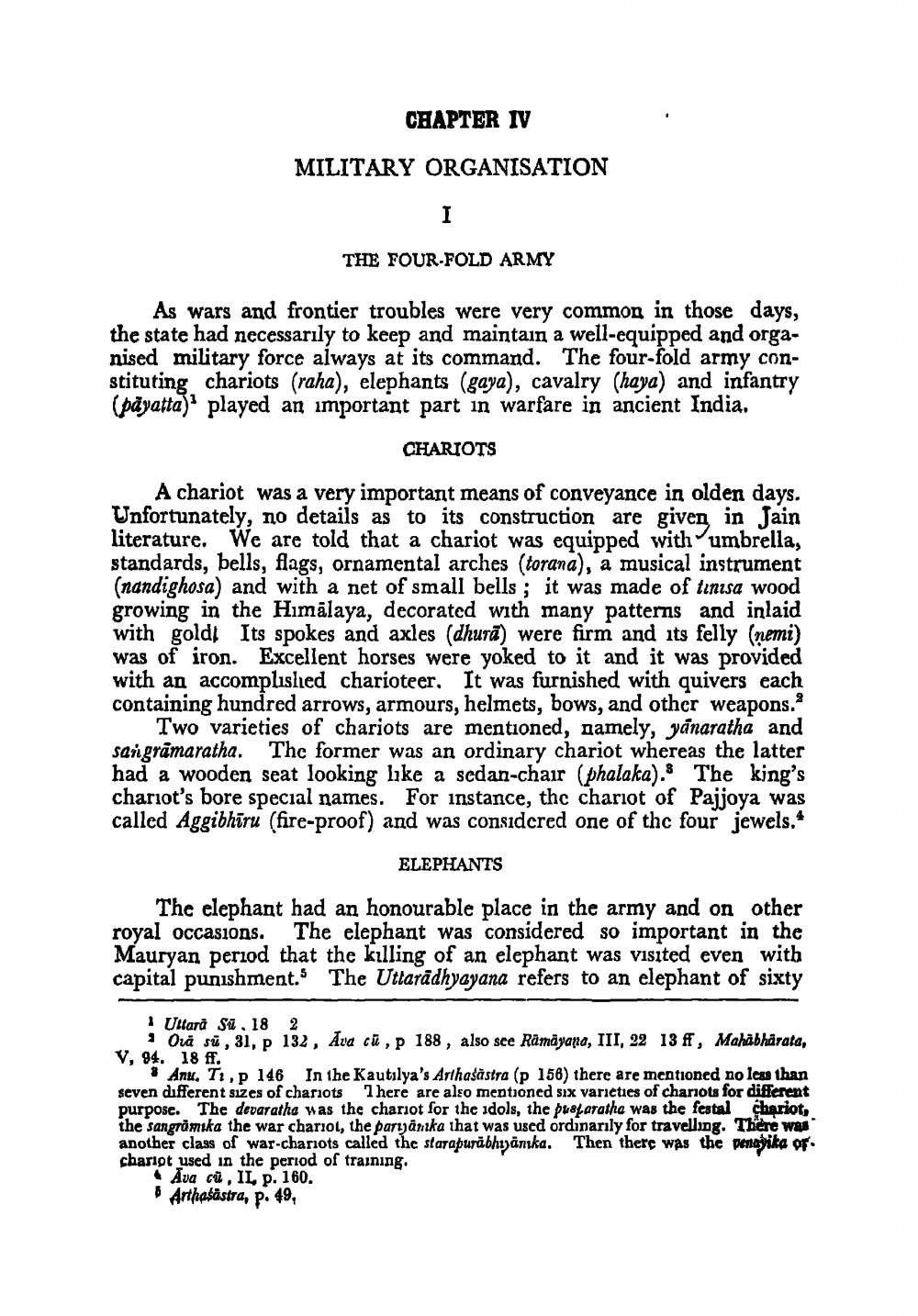________________
CHAPTER IV MILITARY ORGANISATION
THE FOUR-FOLD ARMY
As wars and frontier troubles were very common in those days, the state had necessarily to keep and maintain a well-equipped and organised military force always at its command. The four-fold army constituting chariots (raha), elephants (gaya), cavalry (haya) and infantry (påyatta) played an important part in warfare in ancient India.
CHARIOTS
A chariot was a very important means of conveyance in olden days. Unfortunately, no details as to its construction are given in Jain literature. We are told that a chariot was equipped with umbrella, standards, bells, flags, ornamental arches (torana), a musical instrument (nandighosa) and with a net of small bells; it was made of tinisa wood growing in the Himalaya, decorated with many patterns and inlaid with gold! Its spokes and axles (dhurā) were firm and its felly (nemi) was of iron. Excellent horses were yoked to it and it was provided with an accomplished charioteer. It was furnished with quivers each containing hundred arrows, armours, helmets, bows, and other weapons.
Two varieties of chariots are mentioned, namely, yanaratha and sangrämaratha. The former was an ordinary chariot whereas the latter had a wooden seat looking like a sedan-chair (phalaka). The king's chariot's bore special names. For instance, the chariot of Pajjoya was called Aggibhīru (fire-proof) and was considered one of thc four jewels.*
ELEPHANTS
The elephant had an honourable place in the army and on other royal occasions. The elephant was considered so important in the Mauryan period that the killing of an elephant was visited even with
unishment. The Uttaradhyayana refers to an elephant of sixty
1 Uttarà , 18 2
Ora sū , 31, p 132, Ava cū, p 188, also see Ramayana, III, 22 13 ff, Mahabharata, V, 94. 18 ff.
Anu, T1, p 146 In the Kautilya's Arthasāstra (p 156) there are mentioned no less than seven different sizes of chariots There are also mentioned six varieties of chariots for different purpose. The devaratha was the chariot for the idols, the pufaratha was the festal_chariot, the sangramika the war chariot, the parzānika that was used ordinarily for travelling. There was another class of war-chariots called the starapuräbhiyanka. Then there was the penapika or. chariot used in the period of training,
Ava cū , IL P. 160. Arthaśāstra, p. 49,




